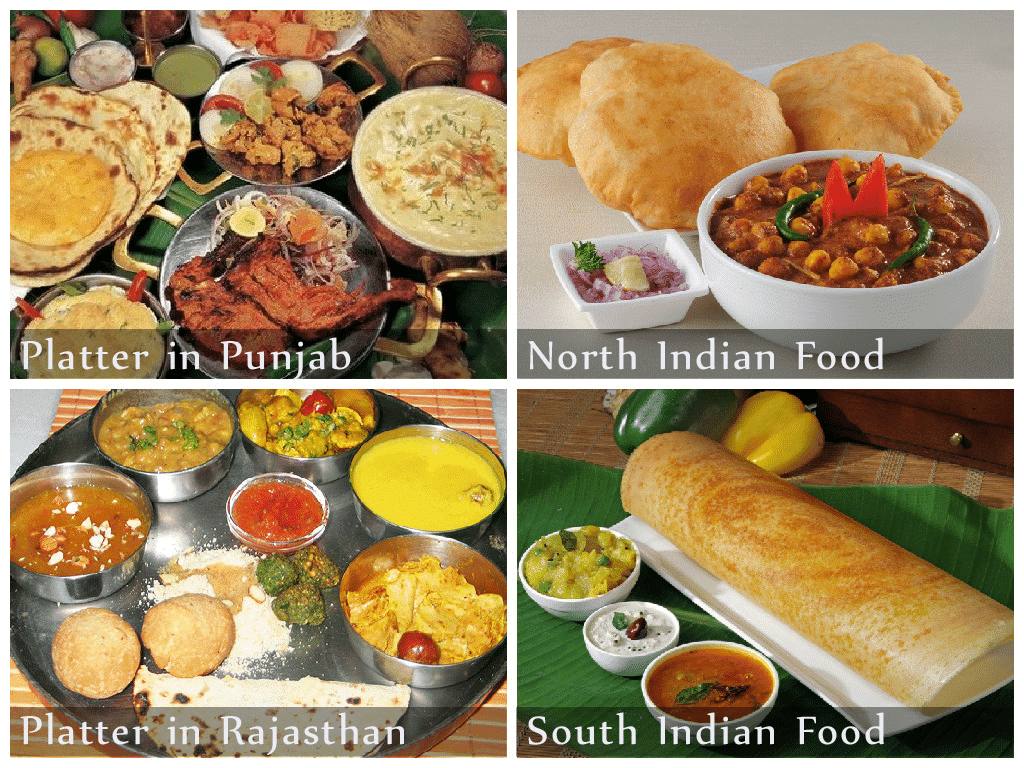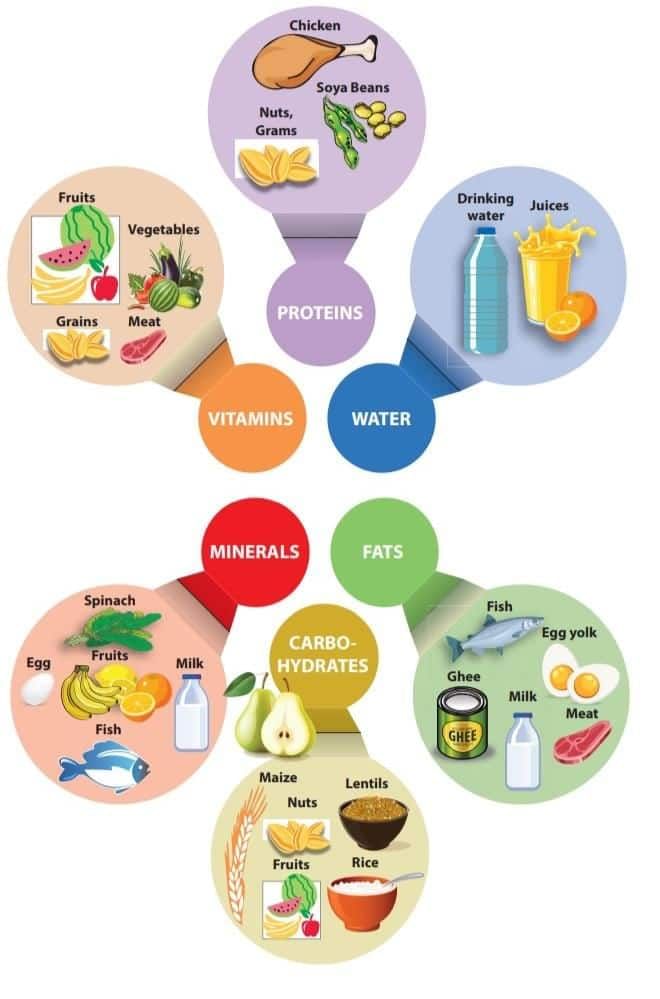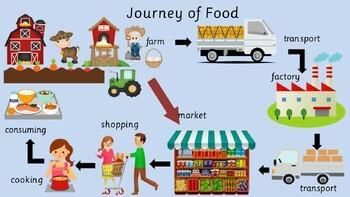NCERT Summary: Mindful Eating: A Path to a Healthy Body | Science for Class 6 PDF Download
Importance of Food
Food is essential for life, growth, repair, and energy. The type and amount of food consumed affect health, strength, and immunity.
Diversity of Food
- Food varies regionally based on crops grown, climate, soil, culture, and traditions.
- Traditional food is usually based on locally grown crops.
- This diversity ensures nutritional balance and connects food choices with the environment.
 Food in different regions
Food in different regions
Traditional Food and Beverages in India
Punjab
- Crops: Wheat, maize, chickpea, pulses.
- Food: Makki di roti, Sarson da saag, Chhole bhature, Parantha.
- Beverages: Lassi, Chhach, tea, milk.
Karnataka
- Crops: Rice, ragi, urad, and coconut.
- Food: Idli, Dosa, Sambhar, Ragi mudde, Rasam.
- Beverages: Buttermilk, coffee, tea.
Manipur
- Crops: Rice, bamboo, soybean.
- Food: Eromba, Utti, Singju, Kangsoi.
- Beverages: Black tea.
Relationship Between Traditional Food and Crops
- Traditional foods are made using locally grown crops.
- Food habits reflect culture and traditions.
Change in Cooking Practices
- Traditional methods: Chulha (mud stove), sil-batta (manual grinder).
- Modern methods: Gas stoves, electric grinders.
- Changes occurred due to technology, improved transportation, and communication.
 Modern cooking equipments
Modern cooking equipments
Components of Food
Food contains nutrients that provide energy, help growth, repair body tissues, and protect from diseases.
1. Carbohydrates
Function: Main energy source.
Sources: Wheat, rice, maize, potato, sweet potato, banana, sugar.
2. Fats
Function: Provide stored energy, keep the body warm.
Sources: Ghee, oils, butter, nuts, seeds, milk products.
3. Proteins
Function: Body-building, growth, and repair of tissues.
Sources: Pulses, beans, peas, milk, paneer, eggs, fish, meat.

4. Vitamins & Minerals (Protective Nutrients)
- Vitamin A – keeps eyes/skin healthy; deficiency → night blindness.
- Vitamin B1 – supports the heart and nervous system; deficiency → beriberi.
- Vitamin C – boosts immunity; deficiency → scurvy.
- Vitamin D – helps absorb calcium; deficiency → rickets.
- Calcium – strong bones/teeth; deficiency → weak bones, tooth decay.
- Iron – important for blood; deficiency → anaemia.
- Iodine – supports mental/physical development; deficiency → goitre.
5. Dietary Fibre (Roughage)
- Function: Helps remove undigested food and prevents constipation.
- Sources: Whole grains, pulses, vegetables, fruits, nuts.
6. Water
Function: Absorbs nutrients, removes waste through sweat and urine.
Testing for Food Components
Starch Test: Iodine → blue-black colour indicates starch.
Fat Test: An Oily patch on paper indicates fat.
Protein Test: Violet colour with copper sulphate + caustic soda indicates protein.
 Starch Test
Starch Test
Balanced Diet
A balanced diet includes:
- All essential nutrients (carbohydrates, proteins, fats, vitamins, minerals)
- Roughage and water
- In the right quantity as per age, gender, physical activity, and health condition.
Junk Food
- High in sugar and fats, low in nutrients and fibre.
- Regular consumption leads to obesity and health issues.
- Should be avoided in favour of healthy, home-cooked meals.
Millets: Nutri-Cereals
- Examples: Jowar, Bajra, Ragi, Sanwa
- Rich in vitamins, minerals, and fibre
- Can be grown in diverse climates and are eco-friendly.
Food Miles
Food miles: Distance travelled by food from farm to plate.
 Reducing food miles:
Reducing food miles:
- Supports local farmers
- Keeps food fresh
- Reduces cost and pollution
Responsible Eating
- Take only as much food as needed.
- Avoid food wastage.
- Respect the efforts of farmers and food producers.
|
67 videos|282 docs|27 tests
|
FAQs on NCERT Summary: Mindful Eating: A Path to a Healthy Body - Science for Class 6
| 1. What is mindful eating? |  |
| 2. How can mindful eating contribute to a healthy body? |  |
| 3. What are some techniques for practicing mindful eating? |  |
| 4. Can mindful eating help with emotional eating? |  |
| 5. Is mindful eating suitable for children? |  |

















